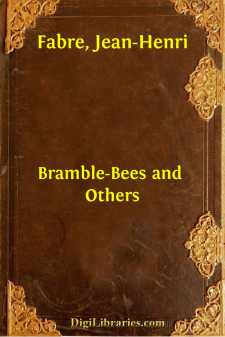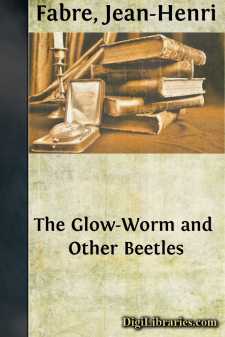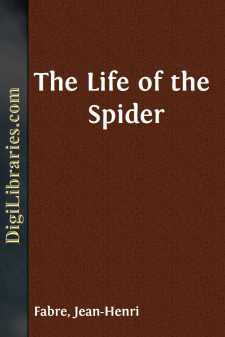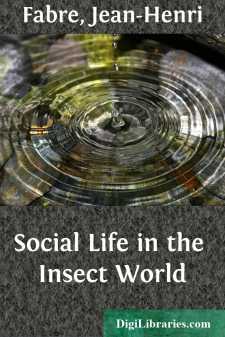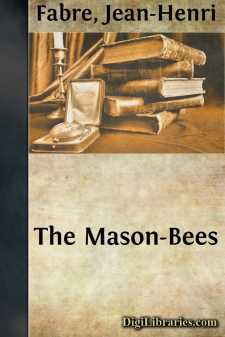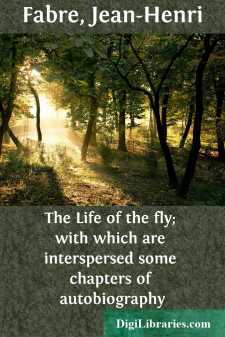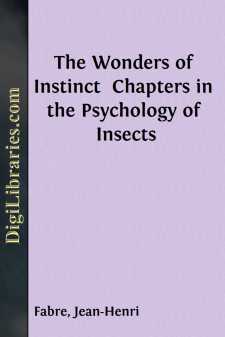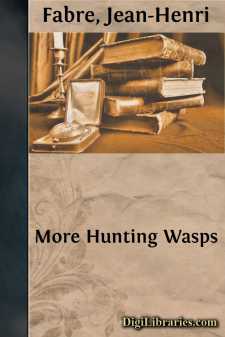Categories
- Antiques & Collectibles 13
- Architecture 36
- Art 48
- Bibles 22
- Biography & Autobiography 813
- Body, Mind & Spirit 142
- Business & Economics 28
- Children's Books 17
- Children's Fiction 14
- Computers 4
- Cooking 94
- Crafts & Hobbies 4
- Drama 346
- Education 46
- Family & Relationships 57
- Fiction 11829
- Games 19
- Gardening 17
- Health & Fitness 34
- History 1377
- House & Home 1
- Humor 147
- Juvenile Fiction 1873
- Juvenile Nonfiction 202
- Language Arts & Disciplines 88
- Law 16
- Literary Collections 686
- Literary Criticism 179
- Mathematics 13
- Medical 41
- Music 40
- Nature 179
- Non-Classifiable 1768
- Performing Arts 7
- Periodicals 1453
- Philosophy 64
- Photography 2
- Poetry 896
- Political Science 203
- Psychology 42
- Reference 154
- Religion 513
- Science 126
- Self-Help 84
- Social Science 81
- Sports & Recreation 34
- Study Aids 3
- Technology & Engineering 59
- Transportation 23
- Travel 463
- True Crime 29
Bramble-Bees and Others
by: Jean-Henri Fabre
Categories:
Description:
Excerpt
CHAPTER 1. BRAMBLE-DWELLERS.
The peasant, as he trims his hedge, whose riotous tangle threatens to encroach upon the road, cuts the trailing stems of the bramble a foot or two from the ground and leaves the root-stock, which soon dries up. These bramble-stumps, sheltered and protected by the thorny brushwood, are in great demand among a host of Hymenoptera who have families to settle. The stump, when dry, offers to any one that knows how to use it a hygienic dwelling, where there is no fear of damp from the sap; its soft and abundant pith lends itself to easy work; and the top offers a weak spot which makes it possible for the insect to reach the vein of least resistance at once, without cutting away through the hard ligneous wall. To many, therefore, of the Bee and Wasp tribe, whether honey-gatherers or hunters, one of these dry stalks is a valuable discovery when its diameter matches the size of its would-be inhabitants; and it is also an interesting subject of study to the entomologist who, in the winter, pruning-shears in hand, can gather in the hedgerows a faggot rich in small industrial wonders. Visiting the bramble-bushes has long been one of my favourite pastimes during the enforced leisure of the wintertime; and it is seldom but some new discovery, some unexpected fact, makes up to me for my torn fingers.
My list, which is still far from being complete, already numbers nearly thirty species of bramble-dwellers in the neighbourhood of my house; other observers, more assiduous than I, exploring another region and one covering a wider range, have counted as many as fifty. I give at foot an inventory of the species which I have noted.
(Bramble-dwelling insects in the neighbourhood of Serignan [Vaucluse]:
1. MELLIFEROUS HYMENOPTERA.
Osmia tridentata, DUF. and PER.
Osmia detrita, PEREZ.
Anthidium scapulare, LATR.
Heriades rubicola, PEREZ.
Prosopis confusa, SCHENCK.
Ceratina chalcites, GERM.
Ceratina albilabris, FAB.
Ceratina callosa, FAB.
Ceratina coerulea, VILLERS.
2. HUNTING HYMENOPTERA.
Solenius vagus, FAB. (provisions, Diptera).
Solenius lapidarius, LEP. (provisions, Spiders?).
Cemonus unicolor, PANZ. (provisions, Plant-lice).
Psen atratus (provisions, Black Plant-lice).
Tripoxylon figulus, LIN. (provisions, Spiders).
A Pompilus, unknown (provisions, Spiders).
Odynerus delphinalis, GIRAUD.
3. PARASITICAL HYMENOPTERA.
A Leucopsis, unknown (parasite of Anthidium scapulare).
A small Scoliid, unknown (parasite of Solenius vagus).
Omalus auratus (parasite of various bramble-dwellers).
Cryptus bimaculatus, GRAV. (parasite of Osmia detrita).
Cryptus gyrator, DUF. (parasite of Tripoxylon figulus).
Ephialtes divinator, ROSSI (parasite of Cemonus unicolor).
Ephialtes mediator, GRAV. (parasite of Psen atratus).
Foenus pyrenaicus, GUERIN.
Euritoma rubicola, J. GIRAUD (parasite of Osmia detrita).
4. COLEOPTERA.
Zonitis mutica, FAB. (parasite of Osmia tridentata).
Most of these insects have been submitted to a learned expert, Professor Jean Perez, of Bordeaux. I take this opportunity of renewing my thanks for his kindness in identifying them for me.—Author's Note.)
They include members of very diverse corporations....


